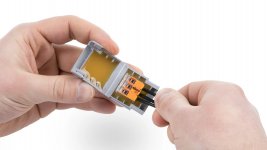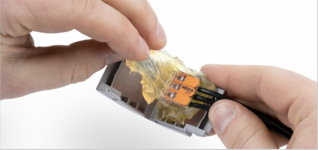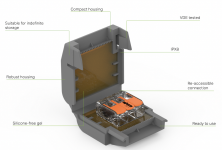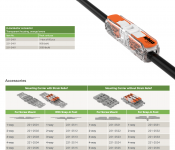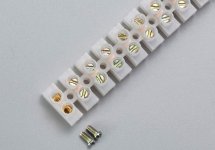pixelated
Member
I get mine from Newark electronics;
https://www.newark.com/wago/221-412-ve00-2500/terminal-block-pluggable-2pos/dp/71Y8326
Link is for the 2 conductor ones, but they have all the varieties.
Coincidentally, one of my weekend projects was changing out a ceiling fan. The Wagos were great, I pre-installed them on the fan's wiring with the lever for the house wiring flipped up. Then once on the ladder, it was just a matter of sticking the supply wires in and locking them.
https://www.newark.com/wago/221-412-ve00-2500/terminal-block-pluggable-2pos/dp/71Y8326
Link is for the 2 conductor ones, but they have all the varieties.
Coincidentally, one of my weekend projects was changing out a ceiling fan. The Wagos were great, I pre-installed them on the fan's wiring with the lever for the house wiring flipped up. Then once on the ladder, it was just a matter of sticking the supply wires in and locking them.

